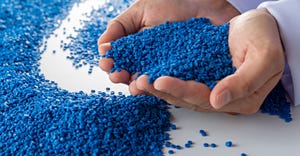IMM Review: Statistical Process Control in Injection Molding and Extrusion
March 5, 2001
The current trend in manufacturing is to implement SPC and programs like Six Sigma as a means to improve productivity and reduce cost. In fact many industries, such as automotive, require their suppliers to use SPC. In this book, the author’s intent was twofold: to update his earlier SPC in Extrusion and expand it to include injection molding, in order to “to teach SPC and its application to specific processes in an integrated fashion.” The goal is for the reader to understand the processes involved as well as the statistics.
The book begins with an overview of the processes of injection molding and extrusion, followed by a third chapter covering the relevant properties of plastic. With Chapter Four the author introduces SPC and basic statistical concepts, followed by a chapter on data collection, data analysis, and problem solving.
Subsequent chapters discuss measurement, especially as related to the injection molding and extrusion processes, control charts, process capability, and design of experiments. This is followed by nine appendices: acronyms, nomenclature, SPC/DOE software, expressions for the normal distribution curve and z-table, glossary, monitoring systems, conversion constants, and proposed new terminology.
The first two chapters provide a good background of the injection molding and extrusion processes, including basic equipment and mold and die design. The third chapter highlights properties of amorphous and semicrystalline plastics that are applicable to processing, such as flow behavior and thermal properties.
The remaining six chapters are devoted to the topic of SPC, and it is apparent that the author is avoiding mathematics as much as possible to keep the material simple. The introduction to basic statistics provides the minimum information necessary to calculate statistical parameters, along with some graphical techniques. However, the avoidance of mathematics in subsequent chapters can make the material more difficult to understand for those without a strong mathematical background. The chapters on data collection, measurement, and control charts provide all of the necessary information, but often terms are introduced without explanation of their origin or significance; in some places the result of a calculation is provided without revealing the equation that is used to obtain it.
The chapter on process capability suffers from similar pitfalls. The tests and methods are applicable, but many calculations are presented without an explanation of what the equations signified. For example, the equations for the control limits were presented without mentioning that they were based on the mean and standard deviation of the data.
In the final chapter the author bypasses the classical and Taguchi methods of design of experiments in favor of a method proposed by Dorian Shainin. This method, however, doesn’t seem much different from the Six Sigma methodology used by General Electric and other firms. This chapter also lacks mathematical detail. The information provided gives a good overview of the DOE process, but it would have been more useful if a detailed example were given, including working through the math.
For readers lacking good knowledge of statistics, the book’s usefulness will be limited other than as a reference for a more rigorous course in SPC. A novice attempting to implement SPC might also want to consult Doty’s Statistical Process Control, an older but more basic text.
Reviewer: Ronald A. Miller, senior staff engineer, The Hoover Co., a division of Maytag, [email protected].
Statistical Process Control in Injection Molding and Extrusion is one of many books selected for injection molders that are offered through the IMM Book Club and count toward a Bonus Book award. For more information, go to www.immbookclub.com; or call Renee Barker at (303) 321-2322; fax (303) 321-3552; or e-mail [email protected].
Rauwendaal, Chris. SPC: Statistical Process Control in Injection Molding and Extrusion (2000), 234 pp., figures, tables, references, appendices, index, $79.00.
You May Also Like


